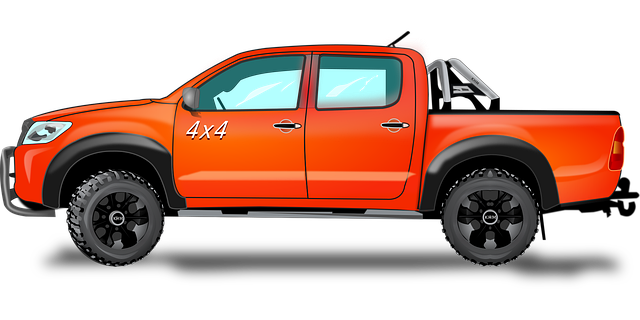Leaf springs, crucial components in automotive suspension systems, especially for RGV wheels and tires, absorb shock and distribute vibrations, ensuring a smooth ride. These metal strips, crafted from high-strength steel or alloy, feature interconnected flat plates for flexibility. In RGV vehicles, leaf springs work with shock absorbers and struts to regulate body roll and pitch, enhancing both responsiveness and comfort. Their tailored curvature and thickness cater to specific vehicle needs, significantly improving ride quality and safety. RGV wheels and tires benefit from leaf springs' direct connection to the chassis, offering stability, control, optimal weight distribution, reduced wear, and extended tire lifespan. Regular maintenance and upgrades are essential for optimal vehicle health.
Leaf springs, a fundamental component in automotive suspension systems, play a crucial role in vehicle performance and ride quality. This article explores the versatile world of leaf springs, starting with their basic structure and function. We delve into how RGV wheels and tires interact with these components to enhance overall vehicle dynamics. Additionally, we cover various types, applications, maintenance tips, and upgrades, offering insights for both enthusiasts and professionals.
- Understanding Leaf Springs: The Basic Structure and Function
- RGV Wheels and Tires: How Leaf Springs Enhance Performance
- Common Types of Leaf Springs and Their Applications
- Maintaining and Upgrading Leaf Springs for Optimal Vehicle Health
Understanding Leaf Springs: The Basic Structure and Function

Leaf springs, a fundamental component in automotive suspension systems, are curved strips of metal designed to absorb and distribute shock and vibrations during vehicle movement. Their basic structure consists of a series of flat plates connected by curved elements, allowing for flexibility and deflection. Each leaf spring is typically made from high-strength steel or alloy, ensuring durability and longevity. The primary function of leaf springs is to provide a smooth ride by isolating the vehicle’s body from road irregularities, enhancing passenger comfort.
In RGV wheels and tires, leaf springs play a crucial role in maintaining optimal vehicle stability and handling. They work in tandem with shock absorbers and struts to control body roll and pitch, ensuring a responsive yet comfortable driving experience. The precise curvature and thickness of leaf springs are engineered to match specific vehicle requirements, contributing to overall ride quality and safety.
RGV Wheels and Tires: How Leaf Springs Enhance Performance

RGV Wheels and Tires benefit greatly from leaf springs, which play a crucial role in vehicle performance and handling. Leaf springs, essentially flexible strips of metal, are used to connect the chassis to the suspension, providing a smooth ride and ensuring the wheels maintain contact with the road surface at all times. This direct connection between the vehicle’s frame and wheels enhances the overall stability and control, especially during high-speed cornering or on uneven terrain.
When it comes to RGV Wheels and Tires, leaf springs offer several advantages. They allow for better weight distribution, which is essential for optimal tire grip and traction. By evenly balancing the vehicle’s load, leaf springs prevent excessive wear and tear on individual tires, extending their lifespan. Additionally, these springs enable the suspension to absorb shocks and bumps more efficiently, reducing the stress on RGV Wheels and Tires, ensuring they remain in top condition even under demanding conditions.
Common Types of Leaf Springs and Their Applications

Leaf springs, a fundamental component in vehicle suspension systems, come in various types, each designed for specific applications. Among the common types are coil springs, leaf springs, and helical springs. Leaf springs, characterized by their multi-leaf design, offer exceptional durability and versatility. They are widely used in vehicles with solid axles, such as trucks and SUVs, providing stability and comfort on rugged terrain. These springs are known for their ability to handle heavy loads and maintain optimal ride quality.
When it comes to performance and customization, RGV wheels and tires play a crucial role. High-performance leaf springs, often found in racing or off-road vehicles, require wheels and tires designed to match their strength and agility. RGV wheels, known for their lightweight construction and advanced engineering, enhance the overall handling and braking capabilities of such vehicles. The right tire selection complements the spring system, ensuring optimal grip, traction, and control, whether navigating through mud, sand, or paved roads.
Maintaining and Upgrading Leaf Springs for Optimal Vehicle Health

Regular maintenance and timely upgrades of leaf springs are essential for maintaining optimal vehicle health, ensuring smooth rides and safe driving conditions. Leaf springs, integral components of a vehicle’s suspension system, play a crucial role in absorbing shocks and regulating wheel movement. Over time, these springs can wear out due to constant use, especially on rugged terrains or heavy-duty vehicles. Wear and tear can lead to reduced spring performance, affecting the overall stability and control of the vehicle.
Upgrading leaf springs, particularly with high-quality RGV wheels and tires, offers numerous benefits. Newer, upgraded springs often feature enhanced materials and designs that improve durability and resistance to corrosion. This results in better shock absorption, increased wheel alignment precision, and reduced tire wear. By investing in top-tier replacement springs, vehicle owners can expect improved handling, extended tire life, and overall enhanced safety while driving.
Leaf springs, with their multifaceted roles in vehicle dynamics, are an essential component, especially when paired with high-performance RGV wheels and tires. Throughout this article, we’ve explored their structural design, performance benefits, and various types tailored for distinct applications. Proper maintenance and upgrades to leaf springs can significantly contribute to optimal vehicle health and safety. When considering RGV wheels and tires, understanding the role of leaf springs ensures a seamless blend of enhanced performance, durability, and overall driving experience.



